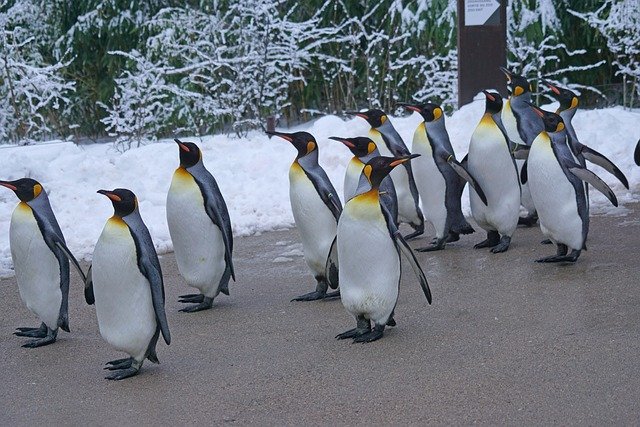
The Remarkable Adaptations of Penguins: How These Flightless Birds Thrive in Harsh Environments
Penguins are some of the most fascinating and resilient birds on the planet. While they may not soar through the skies, their unique adaptations allow them to thrive in some of the harshest environments on Earth. Let's explore the remarkable features that enable these flightless birds to survive and flourish in their icy habitats.
1. Streamlined Bodies for Efficient Swimming
One of the most notable adaptations of penguins is their streamlined bodies. Unlike many birds, penguins have evolved to be excellent swimmers rather than fliers. Their bodies are torpedo-shaped, which reduces drag in the water, allowing them to swim at speeds of up to 15 miles per hour. This adaptation is crucial for hunting fish and evading predators.
2. Insulating Feathers
Penguins are equipped with a layer of tightly packed, waterproof feathers that provide insulation against freezing temperatures. These feathers trap air, creating a barrier that keeps them warm in icy waters. Additionally, penguins have a special oil gland near the base of their tail that secretes oil, which they spread over their feathers to enhance waterproofing.
3. Unique Social Structures
Living in colonies can be beneficial for penguins in several ways. Their social structures help them keep warm in frigid temperatures, as they huddle together to share body heat. This behavior is particularly evident during harsh winters when temperatures can plummet. Moreover, strong social bonds aid in cooperative breeding and nurturing of chicks.
4. Specialized Feet and Flippers
Penguins have adapted their feet and flippers for their aquatic lifestyle. Their flippers are rigid and wing-like, allowing for powerful strokes while swimming. The webbed feet provide excellent maneuverability in the water, enabling them to change direction quickly while chasing prey. On land, their feet are adapted for walking and tobogganing on ice, which helps them conserve energy.
5. Exceptional Diving Abilities
Many penguin species can dive to impressive depths in search of food. For example, the Emperor Penguin can dive to depths of over 1,800 feet and hold its breath for up to 20 minutes. Their bodies are adapted to withstand the pressure of deep dives, and they have a unique blood structure that allows for efficient oxygen storage.
6. Efficient Thermoregulation
Penguins have developed a range of physiological adaptations to regulate their body temperature. They can constrict blood vessels in their extremities to reduce heat loss and have a layer of fat, known as blubber, that provides insulation. Their ability to manage body temperature is crucial for survival in extreme cold.
Conclusion
Penguins are remarkable examples of how species can adapt to thrive in extreme environments. From their streamlined bodies and insulating feathers to their social structures and exceptional diving abilities, these flightless birds have evolved a suite of adaptations that enable them to navigate the challenges of their icy habitats. As we continue to study these incredible creatures, we gain valuable insights into the resilience of life on Earth and the importance of conserving their habitats for future generations.
Feel free to share your thoughts or experiences with penguins in the comments below! 🐧
